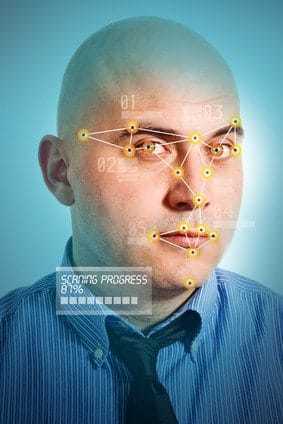 When you were born it took you just moments to recognise your mother. Indeed, even with eyes that do not function well for several weeks, babies can detect the difference between their mother’s face and the midwife’s face within 20 minutes of birth.
When you were born it took you just moments to recognise your mother. Indeed, even with eyes that do not function well for several weeks, babies can detect the difference between their mother’s face and the midwife’s face within 20 minutes of birth.
This puzzled psychologists for years until they worked out that the baby is not really looking at the entire face of mum. Instead they look at a few areas of the face – the eyes and the mouth mostly. It seems that even without being able to properly focus, or see well in colour, new born babies can detect the distance between the eyes and the mouth and can determine when this is different when they see another face.
But don’t think this is just a skill of newborns that we give up when we become more sophisticated. Far from it; even adults use only a small number of features in faces to recognise them. We don’t look at the whole face, but key features. The rest we just “average” out from our experience of faces generally.
And we can do even more than that. If you are asked to look at a crowd scene, within moments you can say what kind of people are in the picture. You have “averaged” all the faces to say something like “they are all white, middle class teenagers”. You don’t have to check every single face – you simply check a few and then scan the rest, averaging out what you see to help you come to a conclusion.
The human brain has a remarkable capability of averaging things out – it means we can absorb just a small set of data and then construct a much more complex picture of things based on past experiences and what psychologists call “schemas” – inbuilt reference kits for interpreting what we see.
For instance, how many different kinds of table are there in the world? Some have four legs, some have six legs, some have one leg. Some are round, some are square, some are rectangular. Some are tall, some are short. Some are made of wood, some are made of metal, some are made of glass. Gosh – can you imagine all the combinations? If your brain had to store all the different kinds of tables so that you could recognise one when you saw it your brain would need ages to go through the list until it found one and you could say “aha, it’s a four-legged, metal and glass coffee table”.
So what we do is average out all the tables we have come across into a “schema” of a table. Then when we see a new kind of table we have never seen before, we can quickly say it is a table because it matches that averaged out, generalised schema.
New research shows that this averaging out process in our brain also happens with auditory information. People were able to say what the average tone was from a series of tones presented in a logarithmic scale, making it hard to determine where the middle was. It is just more confirmation that averaging out things in our brains is a common, convenient method of making our mental functioning straightforward.
It means that when we look at a website we already have an averaged out schema that says “this is a website”. We know what a website looks like, what it feels like and how it functions. We have averaged that out from our experience of thousands of web pages.
For web designers and business owners this means there is a potential danger in being too clever and trying anything to fancy. If someone produces a website which is too far removed from our average experience then people won’t recognise it as a “normal” website. Far from trying to look different, on the web there is an advantage in trying to look similar.
